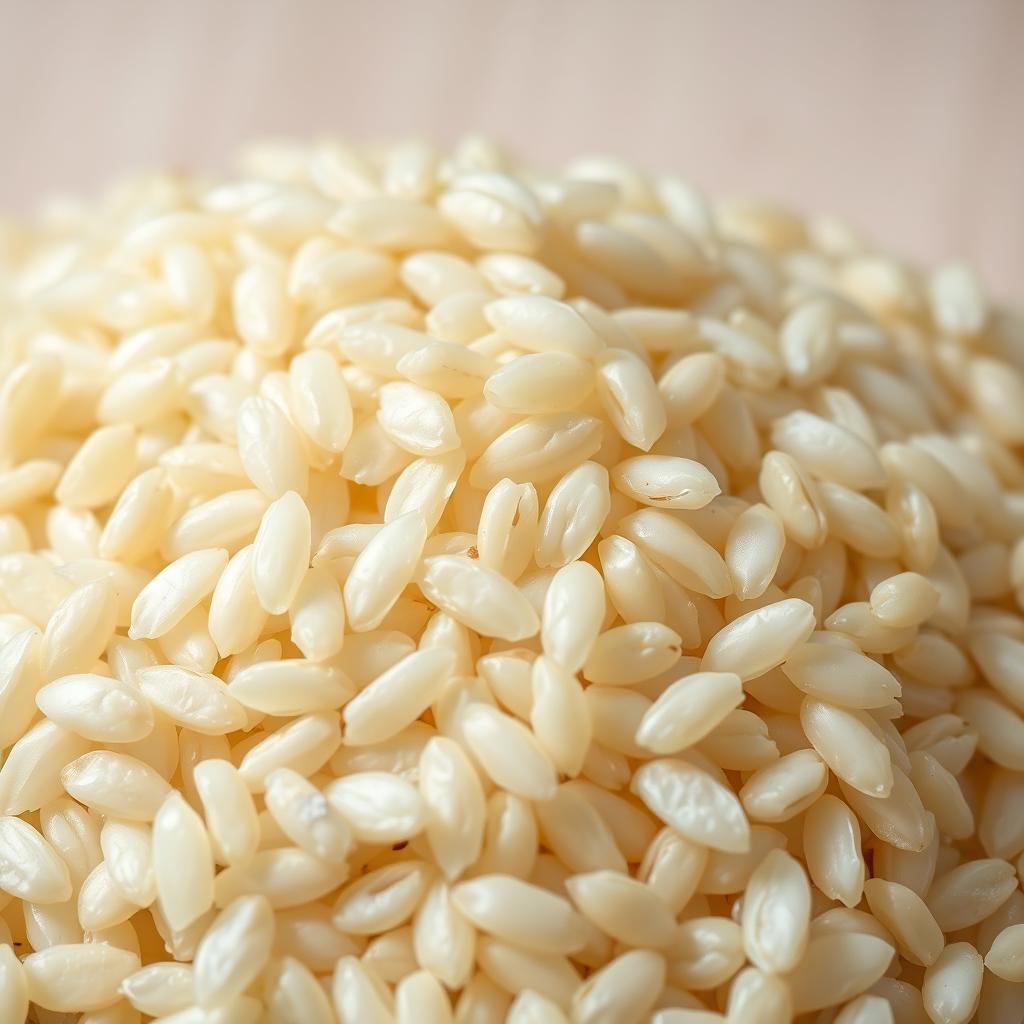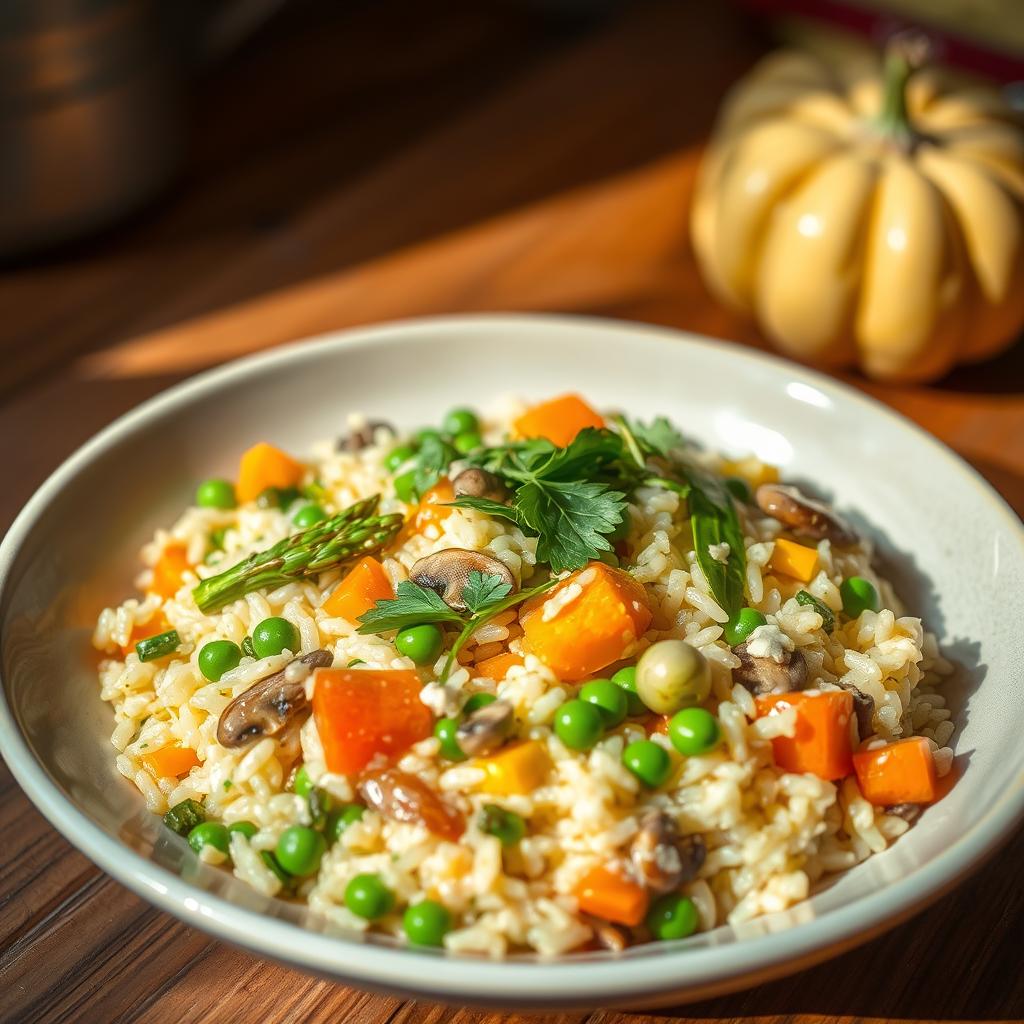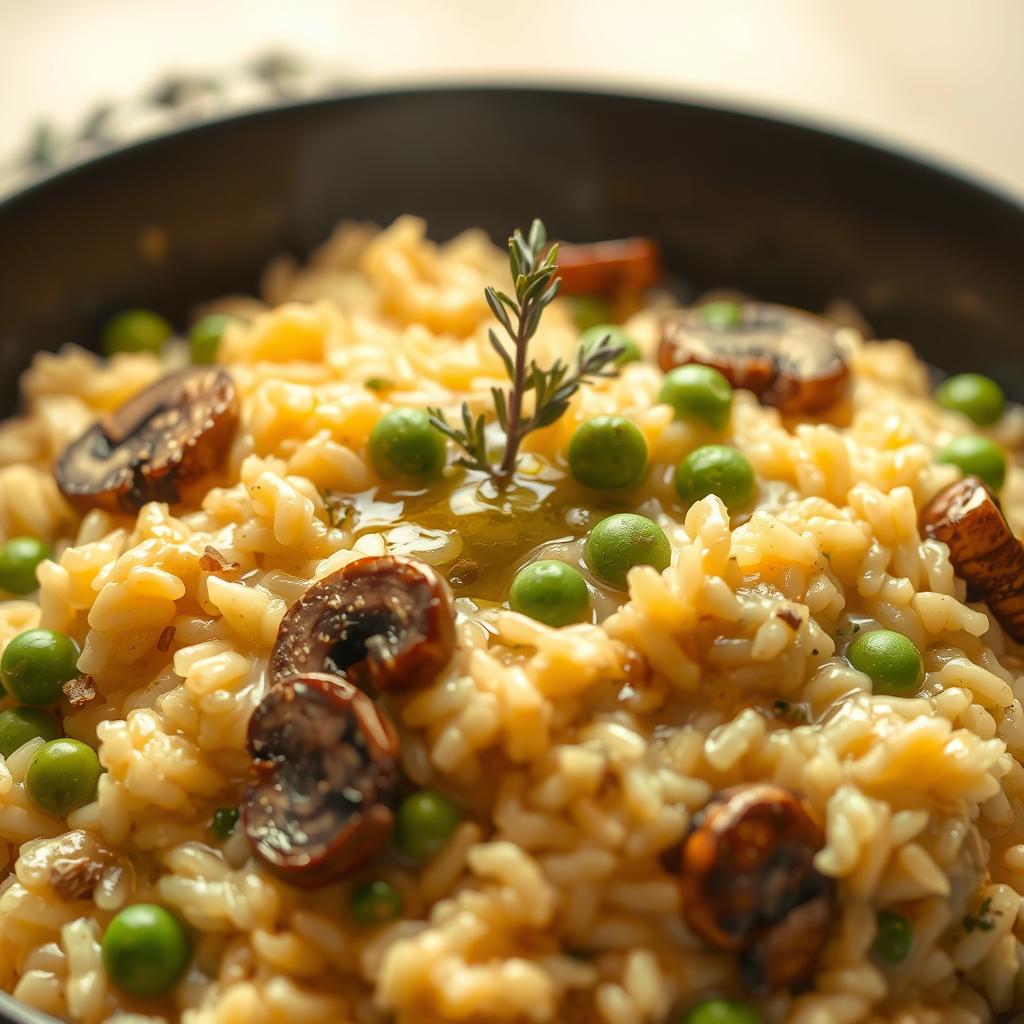Vegan risotto recipes put a creamy, comforting dish within reach of any home cook.
Have you ever wondered how short-grain rice becomes silky without dairy and still packs bold flavor?
Slow cooking releases starch from arborio or carnaroli, while hot vegetable broth helps the grains absorb liquid and shine.
In this guide, you’ll learn chef-style steps: toasting rice, steady stirring, and gradual ladling until the texture is just al dente.
We’ll show when to add wine for brightness or skip it for a milder profile, plus why mushrooms like cremini deepen the savory notes.
Follow clear timing cues and a few finishing touches—vegan butter and plant-based parmesan—to get richness without dairy.
Key Takeaways
- You’ll master texture by coaxing starch from short-grain rice with hot broth.
- Frequent stirring and gradual ladling create the signature creamy finish.
- Choose rice varieties like arborio or carnaroli for best results.
- Use wine for brightness or omit it to control acidity.
- Finish with vegan butter and plant-based cheese for richness.
Vegan risotto recipes you can master today
You can learn to make a silky, savory bowl tonight with one pot and a short list of staples.
Start by sweating a diced onion in oil until soft. Add the rice and toast it briefly; this locks in texture and boosts flavor.
Deglaze with a splash of white wine if you like, or skip it. Then ladle in hot vegetable stock, a cup at a time, stirring until the grains drink it up. Plan on about 25–30 minutes of attentive cooking until the center is al dente.
Finish by stirring in vegan butter and vegan parmesan to create a restaurant-style finish. Rotate add-ins—mushrooms, asparagus, or tomatoes—to change the profile each week.
“Use a steady medium-low flame so the surface simmers gently; never boil vigorously.”
Pro tip: For deeper technique and rice types, see this guide: The Kitchn primer.
How risotto gets creamy without dairy
You get that luscious, saucy texture when short-grain rice slowly releases starch into hot liquid.
The starch science: why arborio releases creaminess
The signature mouthfeel comes from amylopectin in short-grain rice. As you hydrate grains slowly, they shed starch into the cooking liquid.
Arborio, carnaroli, and vialone nano have high starch content, so the sauce thickens naturally without dairy. This is the main mechanism that builds creaminess.
Low-and-slow: managing medium heat and steady stirring
Keep the pan at medium or slightly lower heat so the surface simmers gently. Too much heat makes the liquid boil and stops steady absorption.
Frequent stirring rubs grains together and coax more starch. Make sure you taste for doneness so the center stays just tender.
Broth and wine choices that build flavor
Use hot vegetable broth so the rice absorbs evenly; cold stock slows hydration. A splash of dry white wine such as Sauvignon Blanc or Pinot Grigio adds bright acidity, but you can skip it if you prefer a softer finish.
Season gradually and taste as the broth reduces to balance salt and flavor. For a deeper technique and starch science, see Serious Eats on risotto method.
Essential ingredients for a great vegan risotto

A few smart ingredient swaps lift texture and flavor without adding fuss. Start by choosing the proper rice, then layer fats, liquids, and aromatics so every grain cooks glossy and flavorful.
Rice matters
Choose arborio rice for availability and reliable creaminess. If you want a silkier, firmer finish, opt for carnaroli or vialone nano as premium alternatives.
Fats for flavor
Begin aromatics in olive oil or vegan butter to sweat the onion and garlic. Oil gives a clean sheen; vegan butter adds rounded richness.
Liquids that count
Keep hot vegetable broth at hand and strain it if your carton has dehydrated bits. A measured cup of dry wine can add bright acidity, or skip it for a milder profile.
Flavor boosters
- Season gradually with salt and finish with black pepper for lift.
- Use 1/2 to 3/4 cup ladles of stock so you control absorption and avoid flooding the pan.
- Finish with vegan butter and vegan parmesan for body and cheesy nuance.
- Add mushrooms, peas, or asparagus near the end for texture and earthy contrast.
Your classic vegan risotto base recipe (step-by-step)
Start with a warm pot and a short plan so each stage of this risotto recipe flows smoothly.
Prep and toast
Warm a pot over medium heat. Sauté one diced onion in olive oil or vegan butter until soft.
Add minced garlic for about 30 seconds, then add the short-grain rice and toast for roughly 2 minutes.
Ladle and stir
Deglaze with a splash of white wine if you like, stirring until it’s absorbed. Keep a kettle of hot broth ready.
- Add about 3/4 cup of broth at a time, stirring until mostly absorbed before the next ladle.
- Track the minutes loosely—plan on about 25–30 minutes total—using the al dente bite of the rice as your guide.
- Adjust the heat to maintain a gentle simmer and scrape the pan as you stir to make sure nothing sticks.
Finish strong
When the grains are al dente, remove from heat. Stir in vegan butter and fold through vegan parmesan for a glossy, rich finish.
Taste and season with salt and black pepper. If you prefer a looser texture, thin with a final splash of hot broth.
If you want a deeper technique guide, see this method: Serious Eats risotto method.
Creamy vegan mushroom risotto, the restaurant-style favorite
Turn a pan of sautéed mushrooms into a restaurant-style comfort dish that you can make on a weeknight. This version focuses on deep, savory flavor and simple technique so the mushrooms lead the dish.
Choosing mushrooms: cremini, baby bella, or button
Pick cremini or baby bella for a robust, meaty depth. Use button mushrooms if you want a lighter, gentler earthiness.
No-wine vs wine versions: balancing acidity and depth
A splash of wine adds bright edges and contrast. If you skip wine, boost savory flavor by browning mushrooms well and finishing with a touch of olive oil and butter.
- Sweat onion, then sauté mushrooms until they release and concentrate.
- Toast the rice briefly, then add staged broth while stirring so starch and mushroom juices marry.
- Keep a low simmer; expect a few extra minutes as mushrooms cook off moisture.
- Finish with a crack of pepper, chopped parsley, and optional vegan parmesan for a restaurant-style touch.
Seasonal vegan risotto recipes to keep things fresh

Shift your menu by following the seasons: fresh vegetables and simple swaps keep this rice dish lively year-round. Rotate produce to change texture and flavor without extra effort.
Spring lift
Fold blanched asparagus and peas into the rice near the end. Finish with lemon zest and fresh herbs like dill or parsley for a bright, green-forward plate.
Summer brightness
Stir in halved cherry tomatoes and torn basil just before serving. A light drizzle of olive oil at the end adds perfume and sheen.
Fall comfort
Roast cubed butternut squash and caramelized onions, then fold them through with chopped sage. Add a spoon of nutritional yeast for nutty, “cheesy” notes.
Winter warmth
Sauté mushrooms and leeks for a savory base. Stir in a little tahini or cashew cream to build luscious body without dairy.
| Season | Main vegetables | Finish |
|---|---|---|
| Spring | Asparagus, peas | Lemon, fresh herbs |
| Summer | Cherry tomatoes, basil | Olive oil drizzle |
| Fall | Butternut squash, onions | Sage, nutritional yeast |
| Winter | Mushrooms, leeks | Tahini or cashew cream |
Tips: Add vegetables at the end to preserve bite, or roast them separately for concentrated taste. Keep stirring so the rice releases starch and the texture turns creamy. For more seasonal inspiration and full recipes, explore Forks Over Knives to help you make vegan dishes all year.
Troubleshooting and pro tips for perfect risotto every time
Small adjustments during cooking solve most texture problems and build confidence at the stove.
Common mistakes and quick fixes
Too much heat, cold liquid, or rushing the ladles are the usual culprits.
Keep your broth hot on a separate burner so the rice never stops absorbing.
Avoid cranking the heat; a gentle simmer coaxing starch out of the grains makes a glossy sauce.
Chef tips to steady your timing and texture
Don’t dump gallons of liquid—add about a cup at a time and wait until it mostly absorbs.
Taste after 20–22 minutes and again around 25–30 minutes; al dente means tender with a little chew.
Make sure you scrape the pan as you stir so nothing sticks or scorches.
“Adjust salt near the end—reduction concentrates seasoning, and a one-minute rest turns the sauce silky.”
- Keep broth hot to avoid shocking the rice and stalling absorption.
- Control heat to low/medium so the starch thickens slowly.
- Taste for texture often; trust absorption cues more than the clock.
- If too thick, stir in a splash of hot broth or warm water to loosen.
- Rest off heat for a minute so bubbles settle and the sauce glazes the rice.
Storage, reheating, and serving ideas
Treat your cooked rice gently when storing and reheating to preserve its saucey shine. Follow simple food-safety steps so your next meal tastes bright and stays safe.
Leftovers: refrigerating and reheating tips
Refrigerate leftovers in sealed, airtight containers and use within 3 days. For food-safety guidance, check the USDA page: https://www.usda.gov/food-safety.
Avoid freezing; the delicate starch matrix breaks and the texture turns grainy after thawing. When you reheat, add hot vegetable broth or a splash of hot water to revive creaminess.
Loosen each serving with 1–2 tablespoons of liquid at a time, stirring gently until the sauce regains flow. Use warmed bowls so the dish stays supple at the table and doesn’t seize up.
Toppings and sides to finish strong
Finish bowls with chopped parsley, a crack of black pepper, and a shaving of vegan parmesan for brightness. Pair the plate with a crisp vegetable side salad dressed in olive oil and lemon for contrast.
Conclusion
With a little patience and steady stirring, you can make vegan risotto that feels restaurant-level at home. The core method is simple: short-grain rice, hot broth, gentle heat, and time. Wine is optional; plant-based finishes add the final shine.
Vegan risotto recipes thrive on this repeatable approach. Rotate seasonal vegetables, tweak seasoning, and rest or reheat with a splash of stock to restore creaminess.
Try the step-by-step technique at Serious Eats for extra practice. Share your results and keep adjusting until each bowl matches your taste — with a few tries, you’ll make vegan weeknight risotto like your favorite restaurant.




